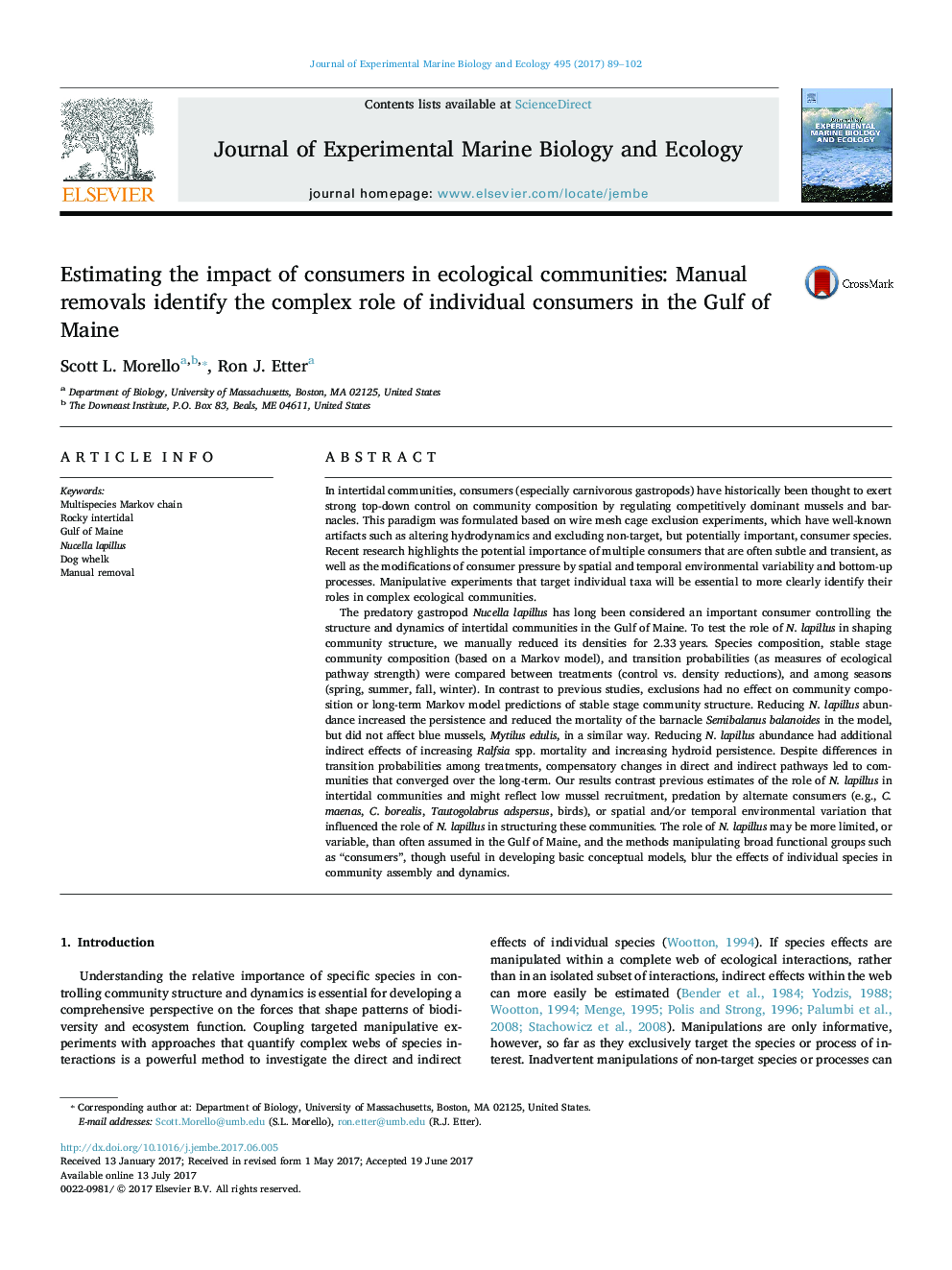| کد مقاله | کد نشریه | سال انتشار | مقاله انگلیسی | نسخه تمام متن |
|---|---|---|---|---|
| 5744474 | 1618380 | 2017 | 14 صفحه PDF | دانلود رایگان |
- Clearly identifying species-specific roles in ecosystems often requires targeted manipulations of individual species.
- Manual removals of dog whelks from intertidal communities increased barnacle, but not mussel, success.
- Reduced whelk densities had no impact on long-term community structure.
- Other sources of mussel and barnacle mortality, and complex interactions, were important to community structure and dynamics.
In intertidal communities, consumers (especially carnivorous gastropods) have historically been thought to exert strong top-down control on community composition by regulating competitively dominant mussels and barnacles. This paradigm was formulated based on wire mesh cage exclusion experiments, which have well-known artifacts such as altering hydrodynamics and excluding non-target, but potentially important, consumer species. Recent research highlights the potential importance of multiple consumers that are often subtle and transient, as well as the modifications of consumer pressure by spatial and temporal environmental variability and bottom-up processes. Manipulative experiments that target individual taxa will be essential to more clearly identify their roles in complex ecological communities.The predatory gastropod Nucella lapillus has long been considered an important consumer controlling the structure and dynamics of intertidal communities in the Gulf of Maine. To test the role of N. lapillus in shaping community structure, we manually reduced its densities for 2.33Â years. Species composition, stable stage community composition (based on a Markov model), and transition probabilities (as measures of ecological pathway strength) were compared between treatments (control vs. density reductions), and among seasons (spring, summer, fall, winter). In contrast to previous studies, exclusions had no effect on community composition or long-term Markov model predictions of stable stage community structure. Reducing N. lapillus abundance increased the persistence and reduced the mortality of the barnacle Semibalanus balanoides in the model, but did not affect blue mussels, Mytilus edulis, in a similar way. Reducing N. lapillus abundance had additional indirect effects of increasing Ralfsia spp. mortality and increasing hydroid persistence. Despite differences in transition probabilities among treatments, compensatory changes in direct and indirect pathways led to communities that converged over the long-term. Our results contrast previous estimates of the role of N. lapillus in intertidal communities and might reflect low mussel recruitment, predation by alternate consumers (e.g., C. maenas, C. borealis, Tautogolabrus adspersus, birds), or spatial and/or temporal environmental variation that influenced the role of N. lapillus in structuring these communities. The role of N. lapillus may be more limited, or variable, than often assumed in the Gulf of Maine, and the methods manipulating broad functional groups such as “consumers”, though useful in developing basic conceptual models, blur the effects of individual species in community assembly and dynamics.
Journal: Journal of Experimental Marine Biology and Ecology - Volume 495, October 2017, Pages 89-102
